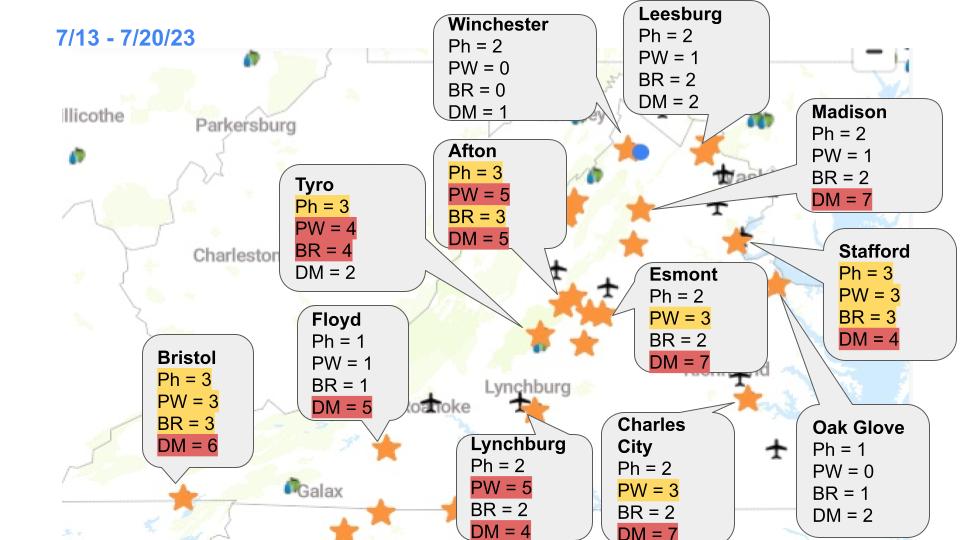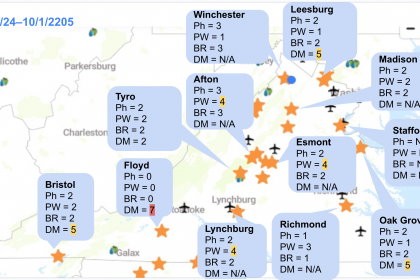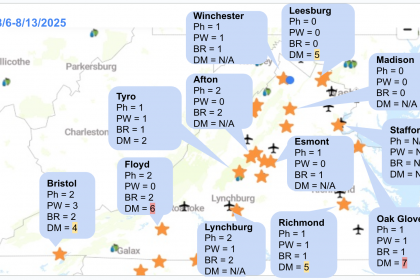Sorry for one day delay.
If you miss the VVA, here’s my handouts. Please consider joining the downy mildew model project. We don’t need a lot of people, but I would like to have enough feedback to improve our outputs and models.
Here’s a snapshot from the last week, showing the number of days with the risk of each disease: Ph = Phomopsis, PW = Powdery mildew, BR = Black rot, and DM = Downy mildew. At this point, Phomopsis and black rot risk probably won’t be as important as earlier in the season. You can ignore Phomopsis and black rot since Phomopsis should be done with their spore production and clusters are resistant to black rot infection at this point. This information was made available through the Wine Board-funded Sentinel Vineyard project.
The central VA had another wet week, which resulted in many days with downy mildew risk event(s). Other locations showed days with downy mildew risk while small numbers of days of black rot risk, which indicates the warm and humid nights and short rain events. We are through the critical period (i.e., ~6 weeks from bloom) for black rot and powdery mildew cluster infection. If your vineyards are clean at this point, you may be able to extend the spray interval from “7 to 10 days” to “10 to 14 days”, depending on the weather and other factors. Please make sure that you won’t violate the 66-day PHI of mancozeb products. Also, you may need to still protect your vines against powdery mildew because they can infect leaves and shoots. Please check my slide presentation for veraison/pre-harvest disease management considerations.

The image above is just a summary of the past seven days. These risk events help you understand what happened. However, preparing your sprays to protect your vines would be best. Please visit https://newa.cornell.edu/ to obtain more detailed information. You can check daily weather data and disease and insect pest model results, including forecasted risks. We paid the annual fee so that growers in Virginia could freely access NEWA.
One way to use this information is to adjust your spray intervals. If you see many days with disease risk(s), you may need to shorten your spray interval, or if you missed a material for downy mildew or black rot, you might wish to spray material(s) with kick-back activity. Or you may want to extend your spray interval, if you have not seen many risks as we have been experiencing this year.
It is essential to understand that the spray decision must be based not only on the weather condition but also on the cultivar and history of the disease(s) in your vineyard





